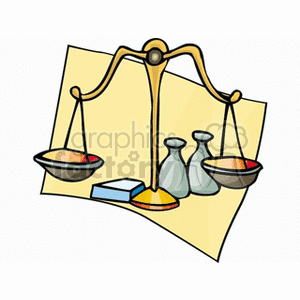As anyone in marketing will tell you, its about results! But, what generates results in marketing? Now, that is a loaded question . . .
Balancing Art and Science
Marketing is a unique industry because of one undeniable trait: its as much about the artistry as it is about the science. A well targeted campaign can completely miss if it doesn't catch the target demographic's attention. Likewise, you can make the most beautiful and artistic mailer or advertisement, but without the right audience for it, your campaign will fall flat.
An effective marketing campaign is a marriage of artistic creativity with scientific analysis. The most difficult part of any campaign is not figuring out to whom your marketing, but how to get through to them. While I wish I could give you a golden rule for success, I can't. Every industry, every product, every campaign, and every consumer is different; so, every marketing campaign should reflect that. While you want to show what makes your product superior to comparable products, you also want to show that your business understands your customers' needs more than another business.
Emotion's Role
So how can you do that? Well it takes some work, but if you can infuse all your research and data with a creative way to reach your customers, you will leave a lasting impression. So once you have your numbers and target demographics, you need to figure out how to appeal to them. And the strongest driving force in any person is their emotions.
While the earliest research and discussion concerning emotional factors in human decision making are credited to Charles Darwin, in 1990, Psychologists John Mayer and Peter Salovey introduced the official term, "Emotional Intelligence" to the scientific community. While initially it was somewhat controversial, after over two decades of research by thousands of psychologists world-wide it is widely accepted concept in the field. Emotional Intelligence is defined as "the ability to identify, assess, and control the emotions of oneself, of others, and of groups."
Essentially this means; a high level of understand for the emotions of people, or a particular group of people (i.e. your demographic), will allow you to influence their decisions. Simply: Emotions drive human behavior. Therefore, the stronger the bond between a person's emotions and a product, the more likely they are to use that product.
Bonding Emotions and Your Product
So how do you create a strong bond? Obviously you want to find the right emotions to associate with your product and, more importantly, find the right way to coalesce your potential customers emotional needs with your product or service.
It all comes down to determining which emotion you want to associate with your product. Then design a marketing campaign with the goal of seamlessly evoking that emotion in your potential customers. For example, a current emotional appeal that is very popular is the BRINKS Home Security Commercials. They show a family having a home broken into and because they have Brinks, the robbers scurry away in fear. This is very effective because this ad associates their brand with safety and comfort, while engendering a fearful mood. This ad is double edged because now you are concerned about home security, and you are emotionally reinforced with comfort by the knowledge you are safe once you do buy a home security system.
Obviously if your a mortgage company, fear might not be the way to go, you might go with joyful family times in a new home. It is about understand who you are trying to appeal to and properly choosing the right emotions for your product or service. If you can successfully do this, then you've successfully marketed your product.
Interested in Reading More From Synergy? Sign Up For Our Newsletter By Clicking Here!
By: Will Pearlman




